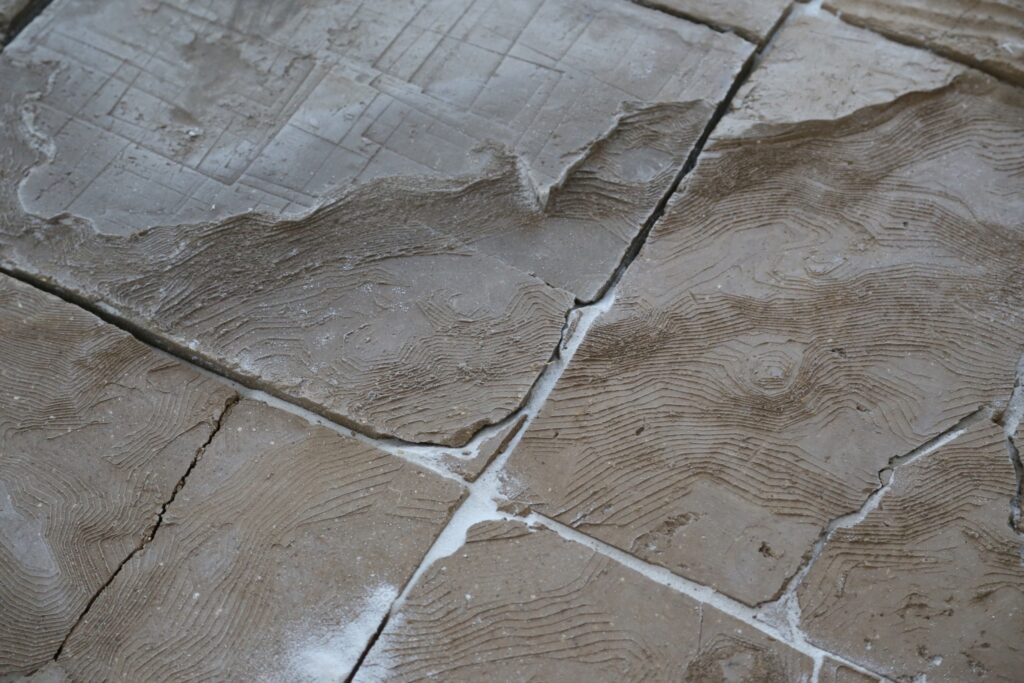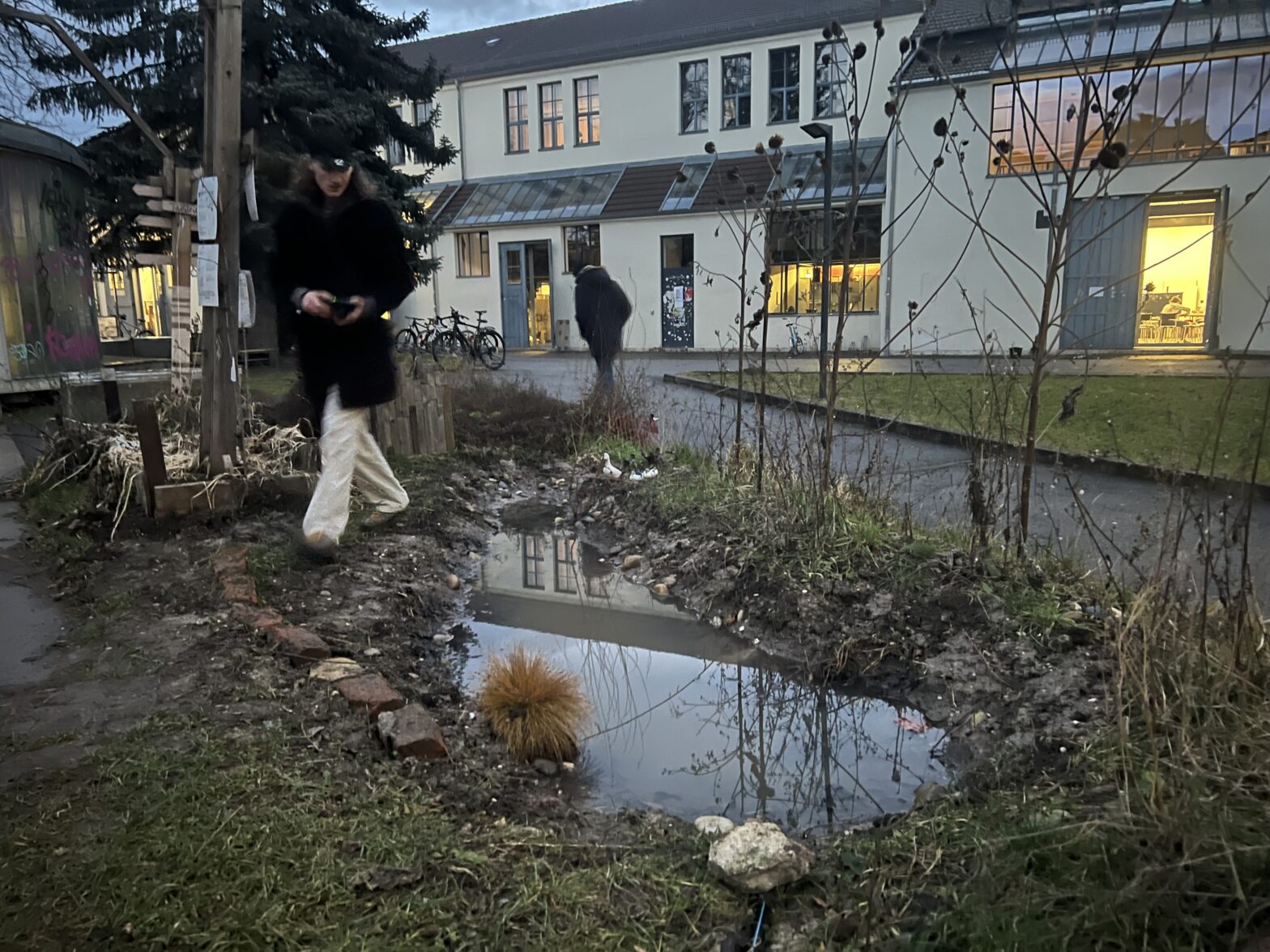A constructed rainwater garden
In collaboration with Kerstin Ergenzinger, Klaus Fritze, Negin Ehtesabian, Cosmo Schüppel, Outi Wahlroos & Co
The Pond is a constructed rainwater garden including a self-built pond with a water rail to redirect rain water into it. The semi-controlled ecosystem invites people to experience the increasing impact from human-induced activities such as pollution, agricultural practices, transportation infrastructure, and, in a broader sense, the impacts of climate change. How do humans impact the environment? Is it possible to experience the change of that impact?
A pond serves as a model of a semi-open system. Although defined by the rainwater it collects and gradually releases into the ground or atmosphere, it remains permeable to its surrounding environment. This makes it an ideal site for experimenting with ecosystem dynamics at the interface of water and land. To facilitate this investigation, a rainwater pond was constructed in the student-managed campus garden of Bauhaus University Weimar, in collaboration with environmental scientist Outi Wahlroos.
To avoid artificially isolating water from its surroundings — by introducing a plastic surface which would restrict the soil’s water absorption — the base of the pond is formed from bentonite, a clay-like material which inhibits water absorption. Unlike plastic or glass containers, which create complete separation from the environment, bentonite allows some level of natural interaction with the environment, preserving the natural conditions and, as such, avoiding an overly reductionist approach to studying ecosystems.
The work draws conceptual inspiration from Ross Ashby’s model of homeostasis and Stafford Beer’s experiments in cybernetics—particularly his notion of the “brain pond,” which incorporated biological organisms into computational feedback loops. The rainwater garden pond thus becomes a hybrid interface—both natural and artificial—that invites reflection on cybernetic models and their limitations when applied to living systems.
Special thanks to the Chair of Media Environments at Bauhaus University Weimar, to Outi Wahlroos, and to the faculty and students of the Faculty of Art and Design for their support and collaboration.
Essay
The Pond. A toolkit to Experience an Aquatic Ecosystem.
Mindaugas Gapševičius, Klaus Fritze Herbst, Outi Wahlroos, Alessandro Volpato, Cosmo Schüppel, Negin Ehtesabian, Jan Munske
Artistic Contributions
[Dried Out] Pond – Mindaugas Gapševičius in collaboration with Felix Bonowski (clay), Vasili Macharadze (3d modeling)
Making the hidden visible – Klaus Fritze Herbst
Pond Says Hello – Cosmo Schüppel
Luminescent dance: the Algae Light spectrum – Negin Ehtesabian
Experiment: Daphnia Test – Klaus Fritze Herbst
radio.earth.Weimar – Kerstin Ergenzinger
Related Media
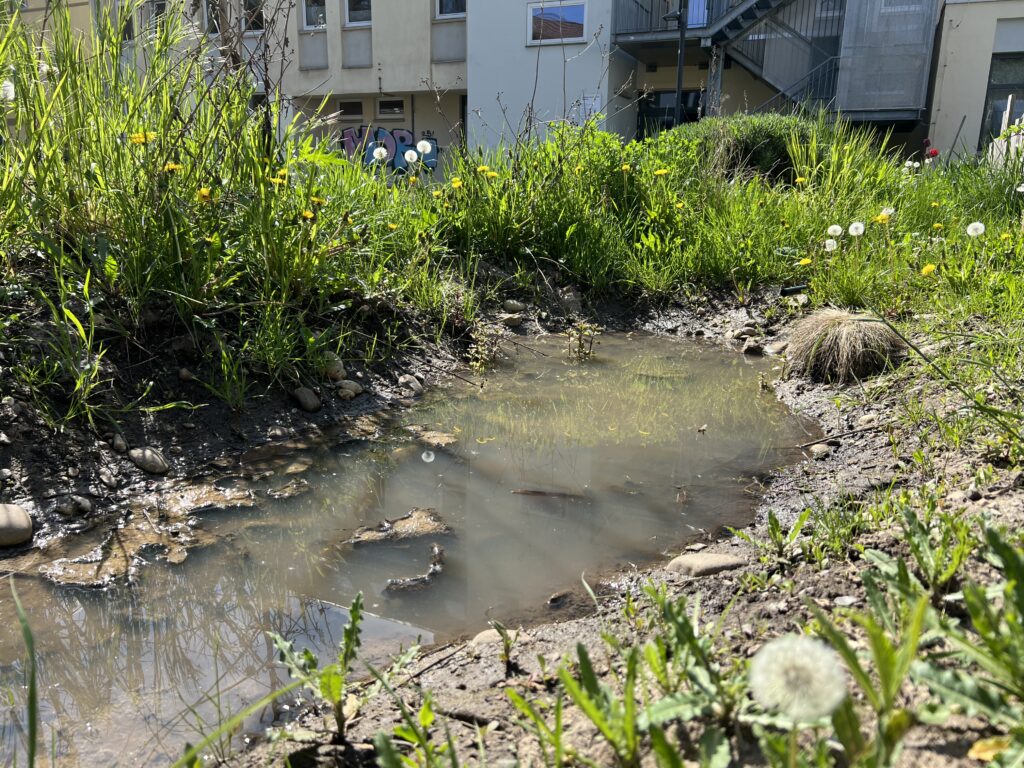
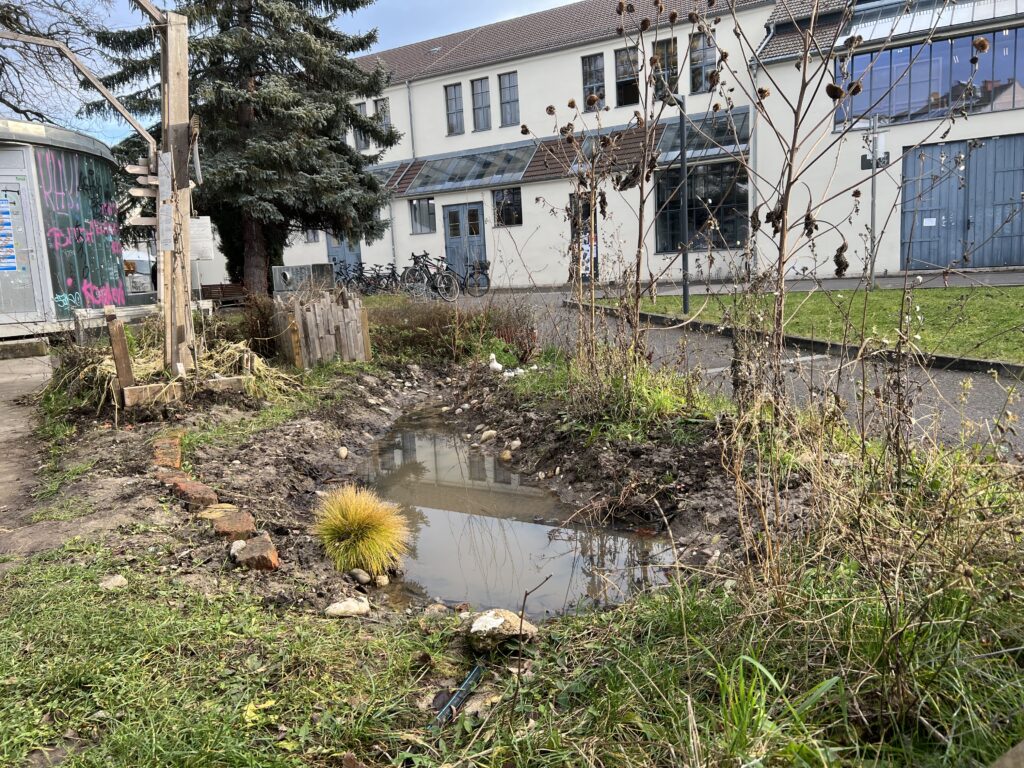
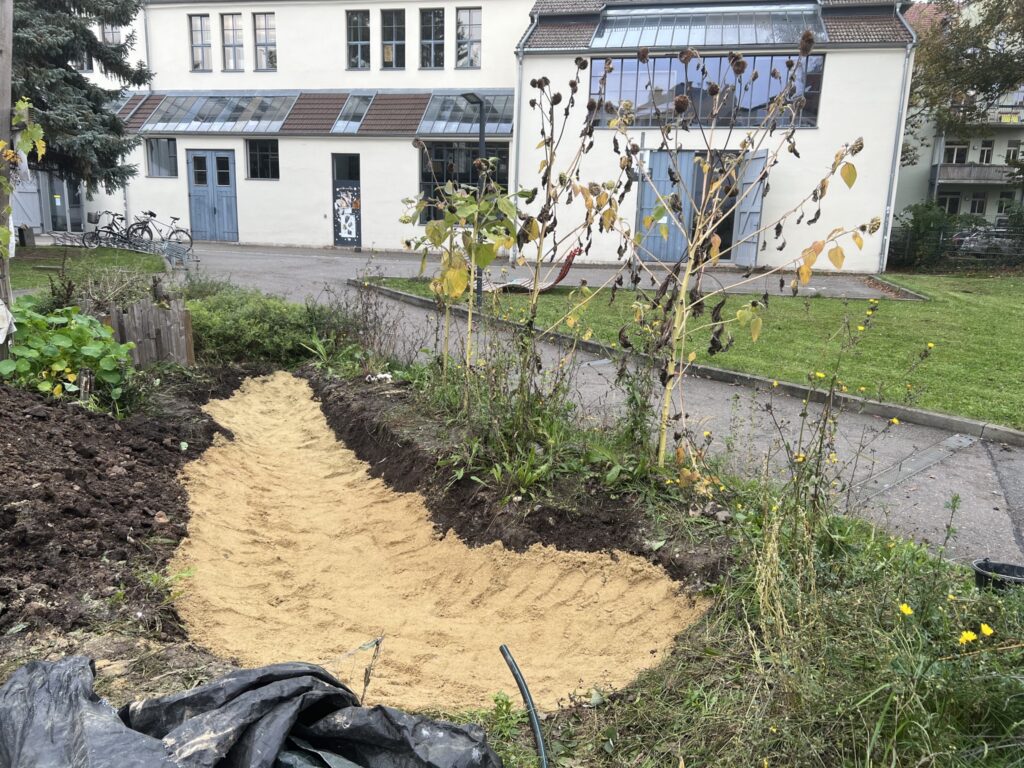
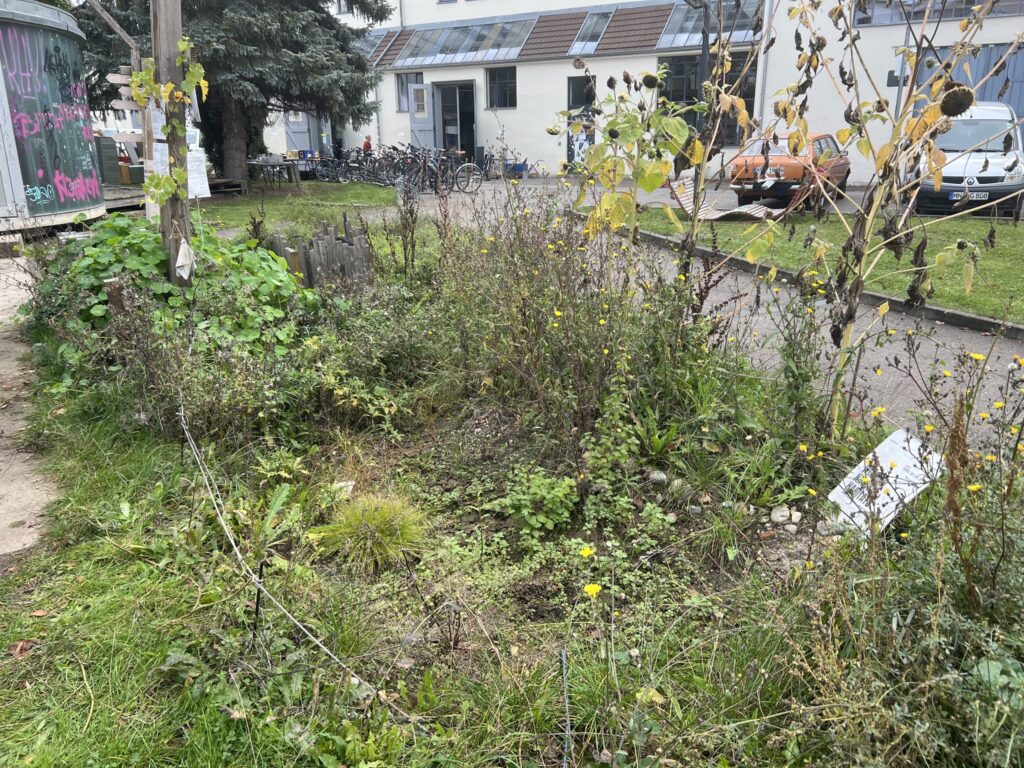
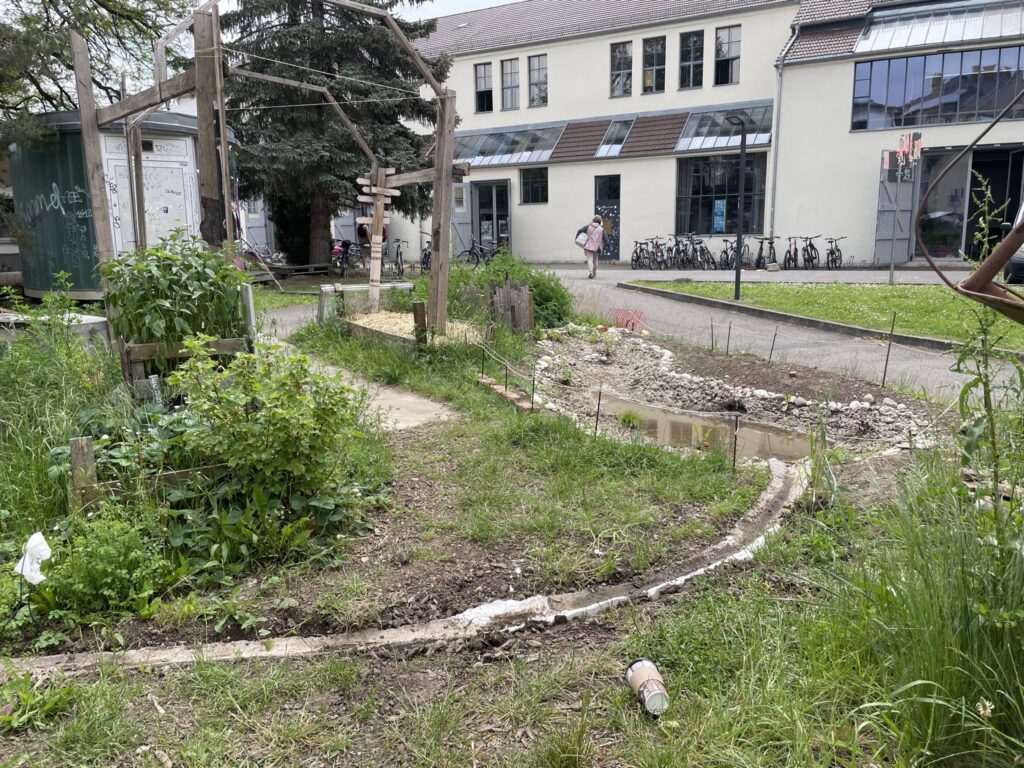
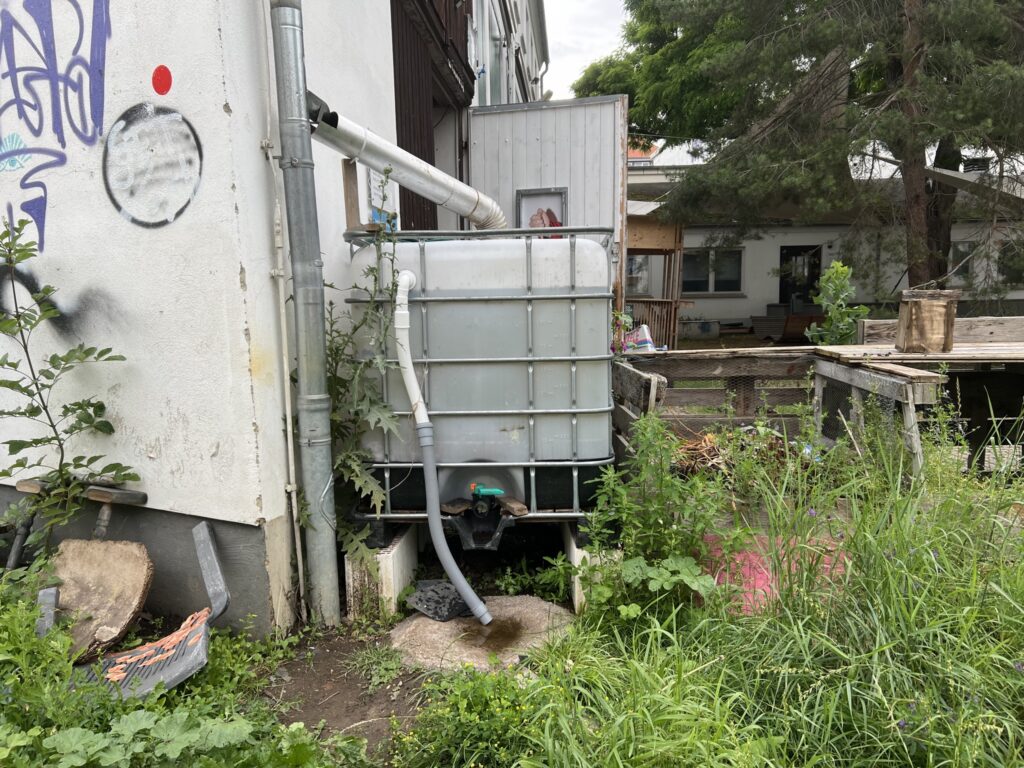
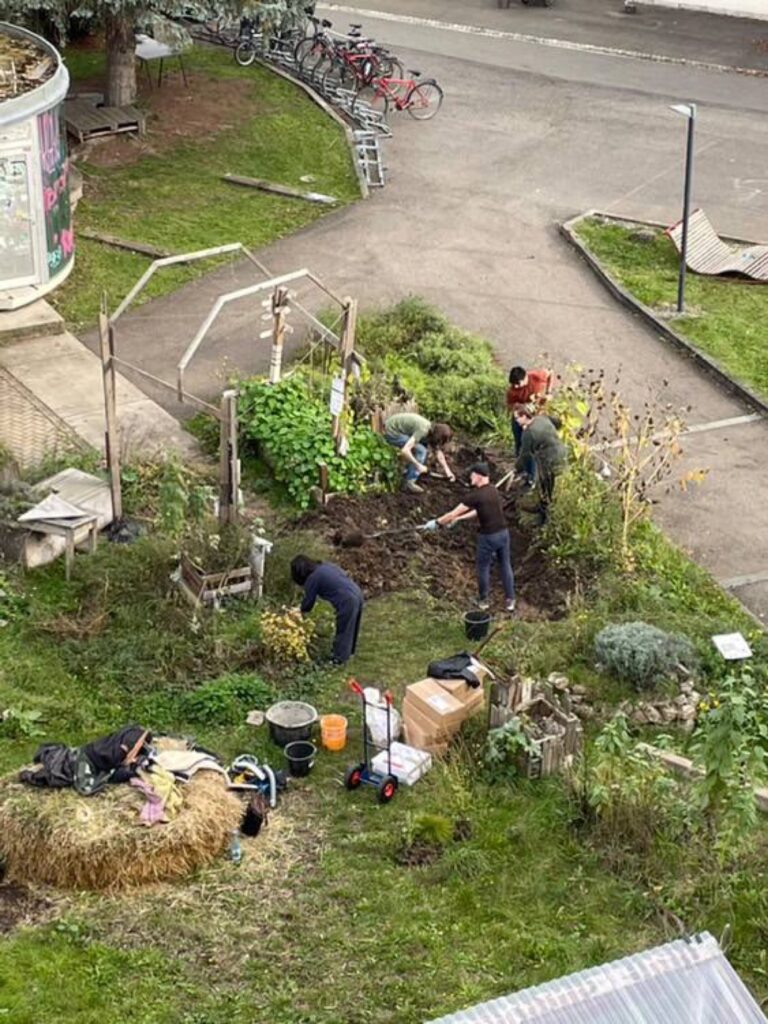
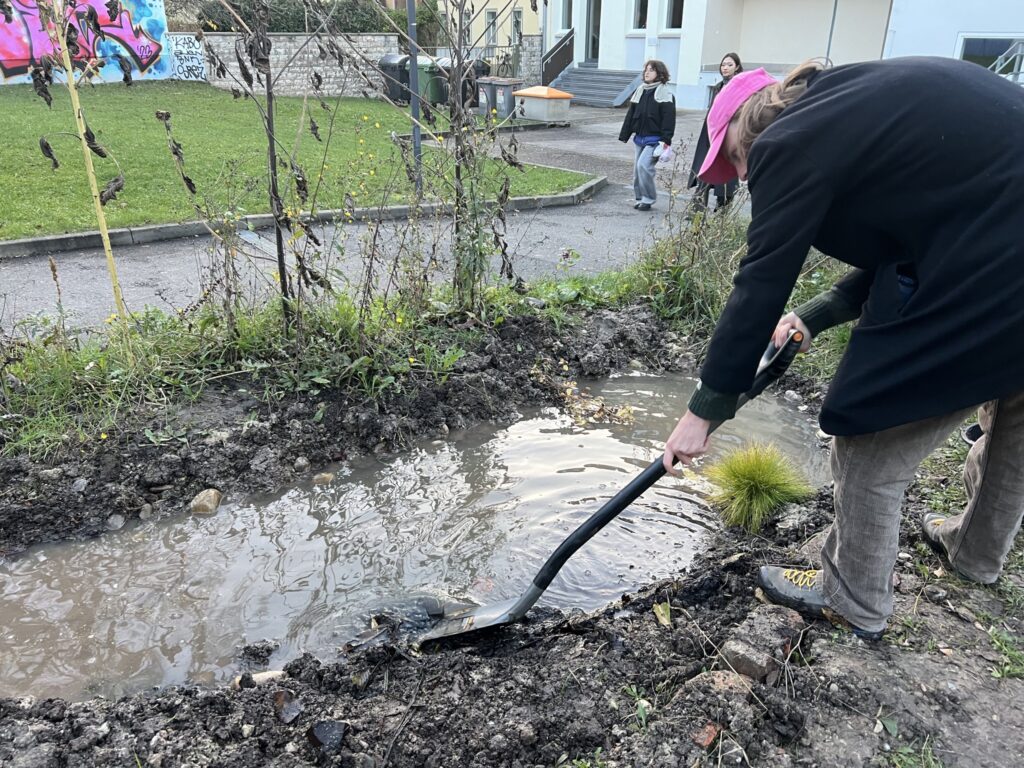
![[Dried Out] Pond](http://triple-double-u.com/wp-content/uploads/2025/09/IMG_2349-1024x683.jpg)
